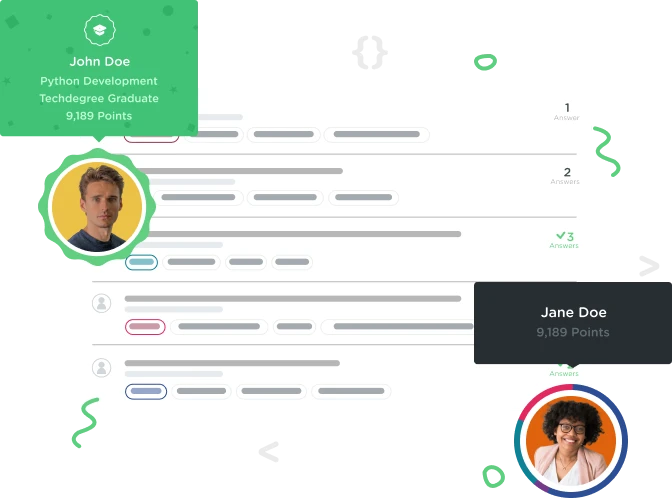Welcome to the Treehouse Community
Want to collaborate on code errors? Have bugs you need feedback on? Looking for an extra set of eyes on your latest project? Get support with fellow developers, designers, and programmers of all backgrounds and skill levels here with the Treehouse Community! While you're at it, check out some resources Treehouse students have shared here.
Looking to learn something new?
Treehouse offers a seven day free trial for new students. Get access to thousands of hours of content and join thousands of Treehouse students and alumni in the community today.
Start your free trial
Sophie Cross
151 Pointstriple quotes-why does it return \n inside the output? when it wasnt typed out in the string?
on the triple quotes part, he types - """She said, "I can't... ... ...even." ...""" and it prints 'She said, "I can\'t ...\n\neven."\n' Then you need to call it with the print function for it to correct itself. I dont understan why it prints that way in the first place and why you wouldnt call to print function in when writing that string anyway? I hope im not being really stupid and missed something obvious Thank you
Alpha Bet
414 PointsAlpha Bet
414 PointsI'm not sure, but I think it's because he essentially does add \n, but he does it by actually introducing a line break rather than typing \n, the REPL then turns it into \n when it prints it back as the string output. So first he types: """She said, 'I can't
Then hits the enter key twice, getting the ellipses (...) because the string isn't finished, essentially adding two line breaks. He then completes the sentence inside the string, hits enter again, and then on the next line completes with triple quotation marks, ending the string. Using the enter key between completing the sentence and the triple quotation marks is why he gets the additional \n at the very end of the output.
I think the reason you wouldn't call the print function is because the REPL isn't really for doing the kind of coding where you set up a set of instructions to run independently (a script that requires specific instructions for each step). Instead it's just for trying things out 'live' so you don't need to tell python when you get to this line, print X, because it's just reflecting back your input line by line as you give it. The reason he's calling the print function here is simply because otherwise the \n input doesn't work, and he wants to demo that it will be useful when writing scripts later.